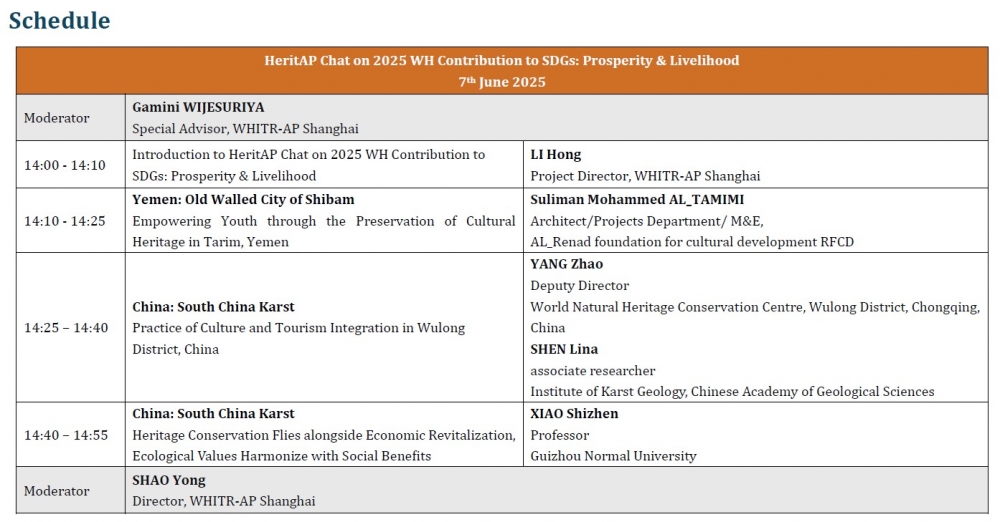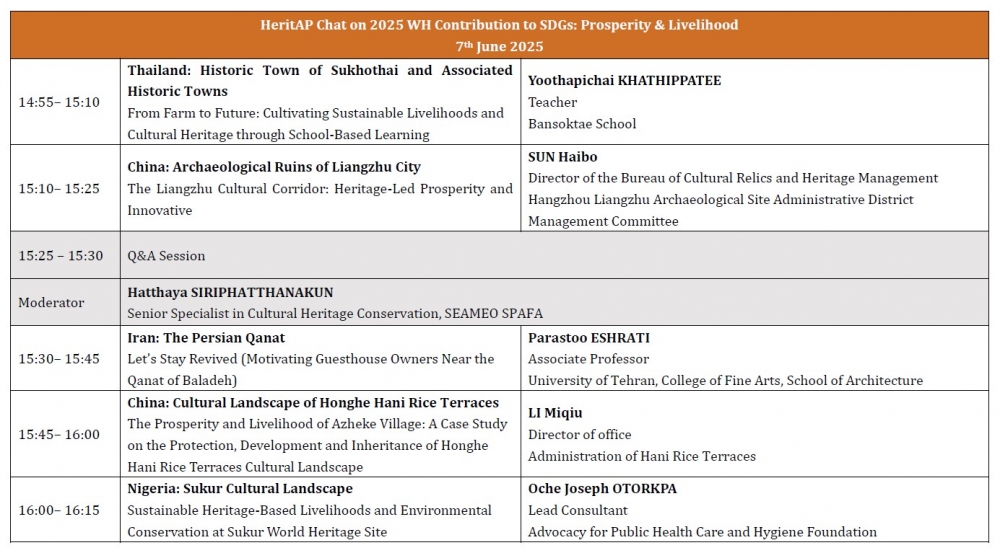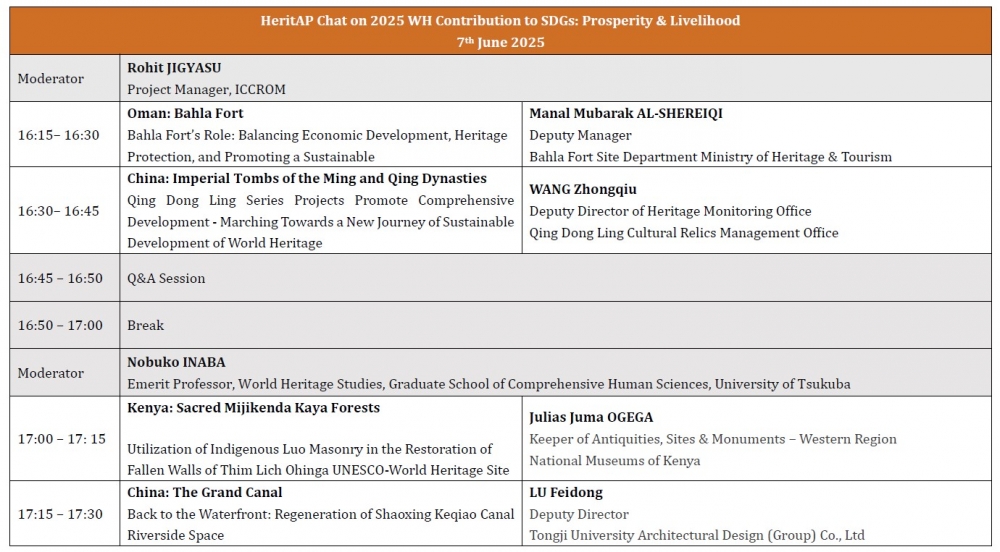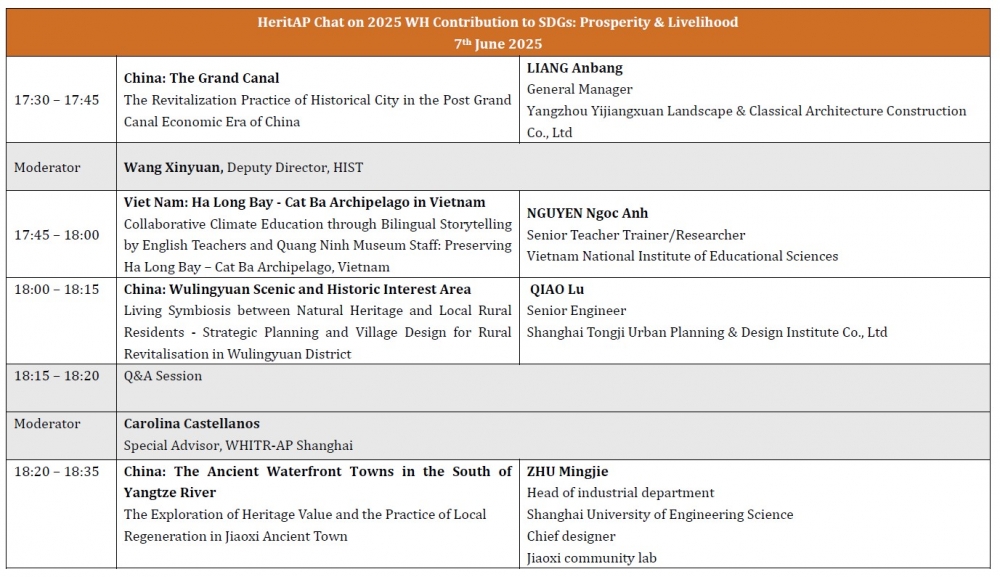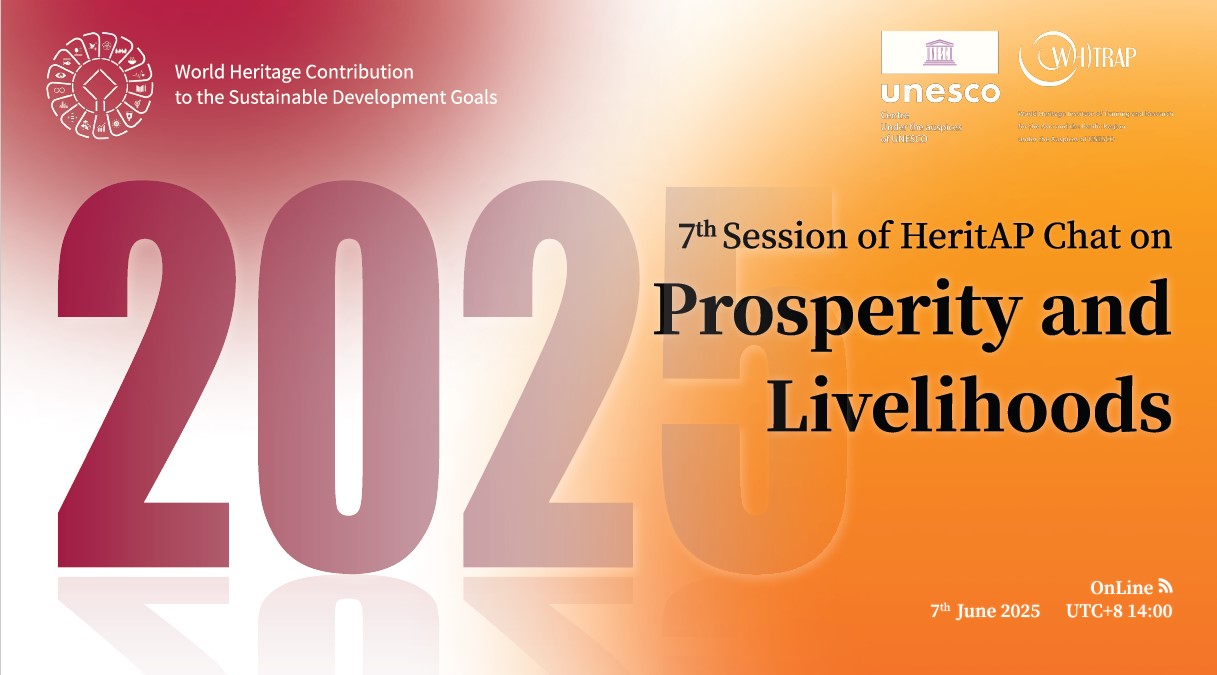
The Heritage Asia-Pacific (heritAP) is a network of heritage practitioners supported by WHITR-AP Shanghai. It aims to foster the sharing of knowledge and experiences among individuals and institutions in the Asia-Pacific Region by establishing diverse links between individuals, groups and institutions, adhering to the philosophy that true knowledge springs from practice.
Since 2023, WHITR-AP Shanghai has launched the HeritAP Initiative on World Heritage Contribution to Sustainable Development Goals. One of the outcomes is the recognition of Good Practices from heritage practitioners on how heritage conservation and management contribute to sustainable development.
Booklet download link is below:
Video link is below:
https://heritap.whitr-ap.org/index.php?classid=12497&id=93&t=show
Background
The United Nations Sustainable Development Goals (SDGs) are the core guidelines for global development efforts from 2015 to 2030. In 2015, UNESCO adopted the Policy on the Integration of a Sustainable Development Perspective into the Process of the World Heritage Convention was formulated to guide the conservation and management of World Heritage. The "Regional Framework Action Plan for Asia and the Pacific (2023 - 2030)" adopted by the World Heritage Committee considers good sustainable development cases as one of the performance indicators.In addition, the UNESCO Thematic Indicators for Culture (Culture| 2030 Indicators) proposed a conceptual framework to measure and monitor the progress of culture’s enabling contribution to the SDGs with four transversal thematic dimensions 1. Environment & Resilience (2024); 2. Prosperity & Livelihoods (2025); 3. Knowledge & Skills (2026); 4. Inclusion & Participation (2027).
In 2023, encouraged by UNESCO, WHITR - AP Shanghai launched the "World Heritage Contribution to Sustainable Development Goals" project (2023 - 2028) in the Asia - Pacific region. A steering group was established with representatives from UNESCO World Heritage Centre, World Heritage advisory bodies, the Southeast Asian Ministers of Education Organization Regional Centre for Archaeology and Fine Arts (SEAMEO SPAFA), the International Centre on Space Technologies for Natural and Cultural Heritage (HIST) etc., to illustrate the main theme with Good Practices respectively based on the four transversal thematic dimensions.
The overall goals of the project are as follows:
- Facilitate all parties' in-depth understanding of international sustainable development documents.
- Explore and recognize the contributions of heritage practitioners in conservation and management work.
- Interpret and analyze effective ways to achieve sustainable development in the practice of heritage conservation and management for heritage practitioners.
Prosperity and Livelihoods (2025)
When exploring the "Contribution of World Heritage to Sustainable Development Goals," based on the Heritage Place Approach, it is necessary to comprehensively examine the sustainable development issues of heritage sites. The Steering group of WHITR-AP Shanghai will start from an overall perspective and conduct an in - depth analysis of good cases. It will interpret the strategic relationships between projects and heritage sites in the five dimensions of culture, economy, society, environment, and governance, and analyze the ways and paths by which these projects influence and promote the sustainable development of heritage sites.
The theme for the 2025 call for cases is "Prosperity and Livelihoods". The cases will show, but are not limited to, the following aspects:
1. A good balance between economic development and heritage protection: Committed to promoting the coordinated development of economic development and heritage protection, through in - depth exploration of regional culture, characteristic tourism products are developed, and cultural and creative industries or other industries are fostered. While achieving significant economic growth, it ensures that the core values of heritage sites are not compromised. Through this development model, a large number of job opportunities are created in the fields of cultural tourism, heritage protection, and related service industries. This effectively raises the income level of residents, comprehensively improves the quality of life of residents, and promotes the prosperity and stable development of the community economy.
2. Strong innovation and promotion of sustainable livelihood models: Actively explore and construct sustainable livelihood models such as in agriculture and handicrafts, promoting the diversified development of the local economy. With the help of policy support and technical training, small and micro - enterprises are assisted to enhance their market competitiveness, optimize the economic structure, and strengthen the resilience of the local economy. The coordinated development of multiple industries promotes the steady progress of the local economy.
After the initial selection, the candidates will present the proposals at the Online HeritAP Chat, an international event with a panel discussion on 7th June, 2025. The panel sitting at the HeritAP Chat will select several projects to be taken to the next step. Following information verification and data supplementation by WHITR-AP Shanghai, representative of the selected projects will be invited to the HeritAP Annual meeting on 5-6 November, where good practices of 2025 WH Contribution to SDGs in Prosperity and Livelihood will be named.
